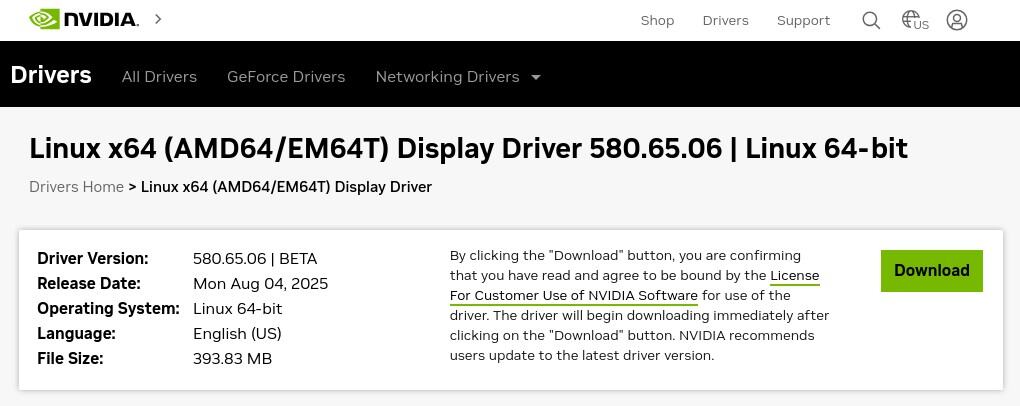NVIDIA has released a fresh beta update to its Linux display driver lineup with version 580.65, now available for 64-bit Linux systems, which brings some important Wayland and Vulkan-related fixes.
For example, it addresses a pesky bug that could cause Vulkan apps to hang whenever a swapchain gets destroyed after a lost device event. Moreover, if you’re running GTK 4 apps on Wayland and hitting crashes when using the Vulkan backend, that’s fixed, too.
There’s even a fix for llama.cpp crashing on exit when using Vulkan, addressing a problem called out directly in the community. Plus, Wayland users get support for the new fifo-v1 protocol with Vulkan, which helps keep things running more smoothly in next-generation Linux desktops.
NVIDIA’s also made GPU clock reporting more consistent across its tools, like nvidia-settings and nvidia-smi. Now, the reported clock values will show numbers from before any thermal or idle slowdown kicks in—basically, giving Linux users parity with what Windows users see.
For virtual reality users, RMIntrLockingMode is now enabled by default, which should reduce stutter in VR scenarios. There’s also an experimental feature for reducing interrupt latency, though you’ll need to manually enable it with a kernel parameter if you want to test it out.

On the display front, NVIDIA fixed a black screen issue affecting certain HDMI modes and resolved problems with Bigscreen Beyond HMDs. For X11 users, the driver patches a bug causing memory leaks after suspend/resume cycles, which had been slowly eating up RAM over time.
On the performance side, NVIDIA is turning on RMIntrLockingMode by default—a feature introduced in earlier releases that can significantly reduce stutter, especially when using virtual reality.
For those chasing even lower latency, there’s now an experimental option to defer some display interrupt work, potentially shaving off precious milliseconds. While this setting is off by default, power users can enable it through a kernel parameter.
Other fixes include resolving rare kernel use-after-free issues on older GPUs, fixing blank rendering in some single-buffered GLX apps under Xwayland, and stopping OpenGL compositors from stalling in “Reverse PRIME” display setups.
Plus, there’s a patch to prevent memory usage from spiraling out of control in Vulkan and OpenGL apps after suspend/resume cycles. And if you’re running 32-bit x86 applications on the latest glibc, this update clears up crashes on dlopen(), too.
Visit the release notes for a complete list of changes and downloads. While NVIDIA recommends keeping drivers up to date, users should note that this is a beta version and thus may not be suited for production environments.
